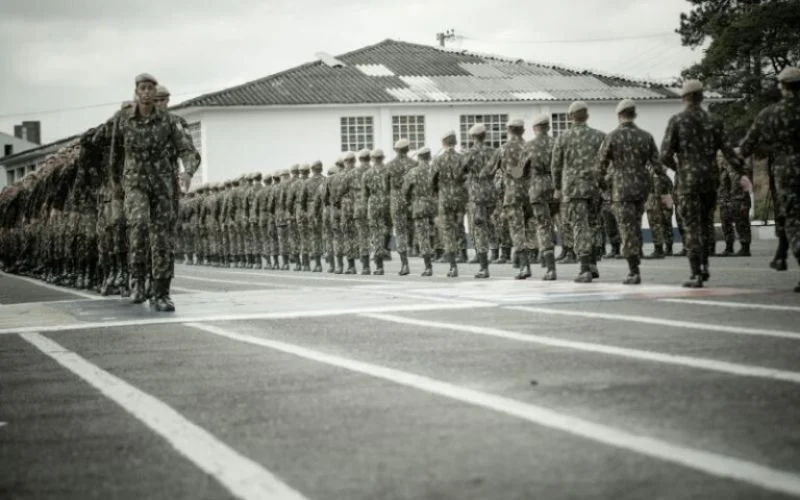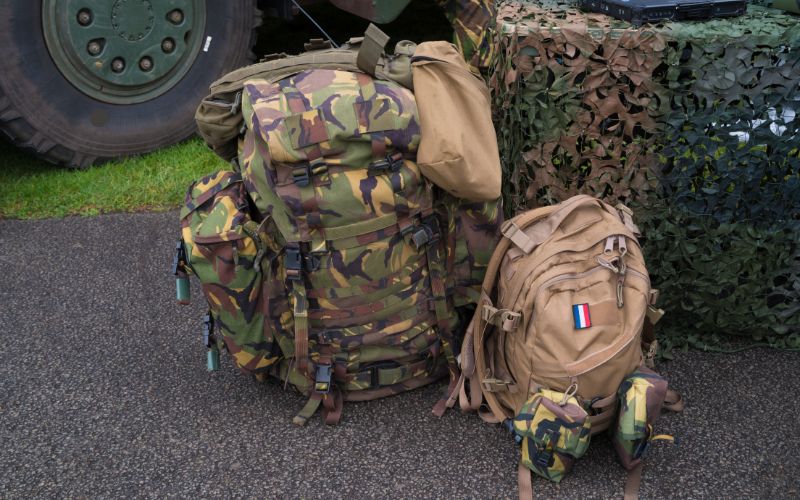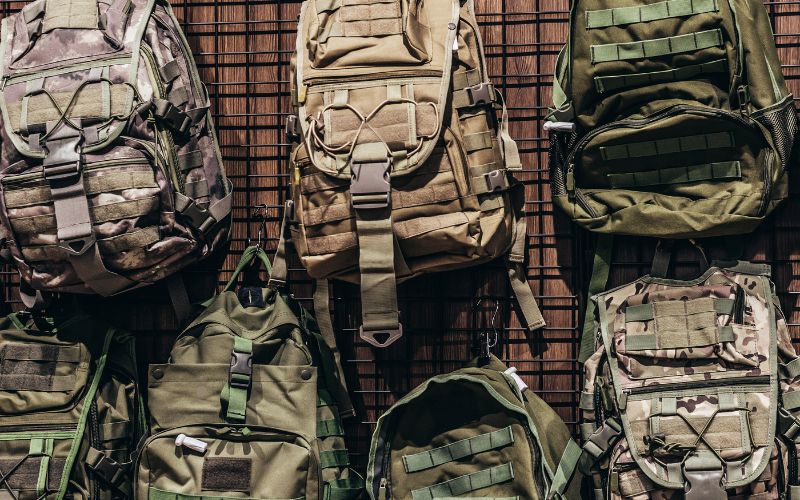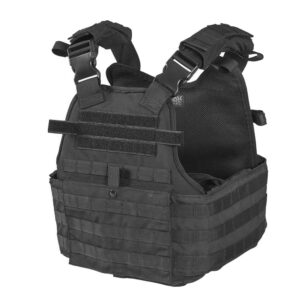Evolution of Plate Carriers with Backpacks for Military

Tactical equipment evolves due to the constant pressure of adaptability and efficiency in military operations. The most important equipment for soldiers is plate carriers and backpacks, which aim to provide protection and mobility while carrying essential mission gear. For decades, these parts have made incredible advancements by fusing functionality, durability, and innovation with the demands of modern warfare.
The Early Days Of Plate Carriers
The first progenitors of plate carriers trace back to fairly primitive body armor systems. Throughout World War I and II, soldiers typically donned heavy steel plates that provided limited protection and cumbersome loadout. These early designs were far from ideal, restricting mobility and adding significant weight to the soldier’s loadout.
By the Vietnam War era, the U.S. military introduced flak jackets designed to protect against shrapnel instead of bullets. This development significantly improved, but flak jackets lacked ballistic protection for combat use—the call for lightweight, versatile armor that could withstand higher threats called for further innovation.
In the 1980s and 1990s, the plates we know today started taking shape. Advanced materials such as Kevlar and ceramic plates were developed, allowing lighter, more effective protection. These materials enabled soldiers to move around without losing vital coverage against ballistic threats.
Introduction Of Backpacks As Tactical Essentials

Simultaneously, the role of backpacks in military operations evolved significantly. Historically, soldiers carried basic canvas rucksacks to hold minimal supplies such as food, water, and ammunition. These early designs were often uncomfortable, poorly balanced, and prone to wear and tear.
Military backpacks improved in parallel with missions becoming more complex, and gear requirements grew. In the late 20th century, backpacks contained features such as multiple compartments, adjustable straps, and load-bearing systems to make them more comfortable and efficient. This paved the way for integrating backpacks with plate carriers and safeguarding with utility.
The Convergence: Plate Carriers With Integrated Backpacks
The increasing demand for versatile and modular equipment in the modern military has led to plate carriers with integrated backpacks. This convergence was enabled by the need to streamline gear and enhance soldier effectiveness in the field—such systems balance protection and storage without curtailing mobility.
Key Milestones in the Evolution of Integrated Systems
1990s – Modular Tactical Vests (MTVs)
Modular Tactical Vests were the first part of putting the load-bearing capability and protective equipment onto the load-bearing capability. The soldier attaches pouches, hydration packs, and small tactical backpacks directly to the vest to minimize the need to wear another batch of gear.

MOLLE System Integration: 2000
MOLLE was the name given to this Modular Lightweight Load-carrying Equipment. MOLLE brought a more modular approach to military gear, and soldiers could customize their plate carriers with various pouches and backpacks to create a seamless and personalized loadout. The system’s webbing provided the foundation for safely mounting additional gear.
Current Innovations: Lightweight Hybrid Systems
Currently, plate carriers and backpacks are integrated. These systems focus on weight distribution, ventilation, and flexibility. High-strength nylon and composite fabrics make them durable while reducing weight. Features such as quick releases and adjustable configurations accommodate various mission needs.
Benefits Of Integrated Plate Carriers With Backpacks
Plate carriers with integrated backpacks have changed the game for soldiers regarding tactical gear. These systems enhance operational performance by combining ballistic protection with efficient storage solutions while streamlining a soldier’s loadout. They also offer streamlined, ergonomic designs that improve mobility, comfort, and adaptability in multiple mission scenarios. Below, we delve into the specific advantages of these innovative systems.
1. Streamlined Loadout for Maximum Efficiency
One of the great advantages of integrated plate carriers and backpacks is that they streamline your loadout. Most conventional configurations involved separate protection and storage systems, which made for clunky and often awkward configurations. Integrated systems bring these two functions together in one unit, thus eliminating some unwanted gear layering.
This streamlined design simplifies organization, allowing soldiers to focus on their mission without worrying about tangled straps or shifting tactical equipment. Additionally, it reduces preparation time during missions, enabling faster deployment and response.
2. Enhanced Mobility in Challenging Environments
Mobility is crucial for soldiers operating in complicated terrains or fast-moving combat. The integrated plate carriers and backpacks distribute weight evenly across the body to create less weight and improve balance and posture. This design allows soldiers to move nimbly and fluidly through cities, over rugged terrains, or confined areas without their gear becoming a liability.
The mass reduction also reduces snagging on obstacles, essential for preserving stealth and agility during critical operations.
3. Customization for Mission-Specific Needs
The modern plate carrier with an integrated backpack is a modular design system similar to the MOLLE system. Thus, extensive customization is built into each piece of equipment. Mission-specific pouches, hydration systems, or specialized equipment could be attached to the carriers; this way, every soldier can ensure his gear meets the specific requirements for the operation.
For example, a long-range patrol may need extra hydration packs and ration storage, while an urban combat scenario may require more ammunition and breaching tools.
The flexibility of loadout increases operational effectiveness without leaving one unused space.
4. Better Weight Distribution for Comfort
Carrying heavy loads for long distances can easily make a person feel tired, uncomfortable, and even injured. Integrated systems are conceptualized with ergonomics, ensuring that weights are evenly spread around the shoulders and back, lessening stress on the shoulders and backs. Comfort features include padded shoulder straps, load-bearing frames, and suspension systems.
This offers better load distribution, particularly for troops deployed on extended missions. They can sustain their endurance and concentration without having their equipment weigh them down.
5. Enhanced Protection and Storage Integration

Integrated plate carriers and backpacks provide the dual benefit of ballistic protection and storage within a single system. Soldiers carry critical equipment such as ammunition, medical supplies, and communication devices while still being protected from ballistic threats.
Another advantage of integration is that it reduces the number of duplicate systems required and their weight and space requirements. It also makes gear organization easier, enabling the accessibility of critical mission equipment without compromising safety.
6. Compatibility with Modern Tactical Equipment
Modern military operations do not go without highly advanced technology, from communicative devices to night vision goggles. Integrated plate carriers and backpacks for such advanced devices have specially dedicated compartments, cable routing systems, and so forth, allowing soldiers to stay connected and equipped during missions.
Hydration system integration, power sources, and other accessories enhance their functionality, making them no small parts of a soldier’s arsenal.
Challenges And Considerations
The benefits of plate carriers with integrated backpacks come with challenges. Protection, mobility, and load-carrying capacity must be balanced so the soldier is not over-armed. Other operational environments, such as urban combat versus long-range patrols over vast terrains, call for different solutions.
Additional relevant issues involve compatibility with other existing gear. Soldiers must often adapt their load-outs to include night vision goggles, sidearms, or other specialized tools, further complicating design and functionality within integrated systems.
Conclusion
Including backpacks in the line of plate carriers for military applications shows that innovation is vital in tactical equipment. These developments have changed how soldiers move forward in the field, from the heavy, rigid armor of old to today’s light, modular systems. Modern designs allow military personnel to better confront combat by equipping protection with utility.
With the advancement of technology and materials science, even more promise lies in a promising future for plate carriers with integrated backpacks. Such systems will undoubtedly become central to enhanced soldier capabilities and safety worldwide, equipping them to meet the demands of an ever-changing battlefield.
Frequently Asked Questions
What is the main benefit of plate carriers with integrated backpacks?
The main benefit is the streamlined design, which integrates ballistic protection with the ability to carry essential gear without requiring separate equipment, enhancing mobility.
How do contemporary materials advance plate carriers and backpacks?
The materials, such as Dyneema and composite fabrics, offer great protection and make them less heavy. They also make the backpack durable and comfortable, allowing it to be used for longer hours in all weather conditions.
Are integrated plate carriers and backpacks modifiable?
They are very adaptable. Most designs are highly customizable, with modular attachment systems like MOLLE enabling users to adapt their gear to specific missions and operational requirements.

